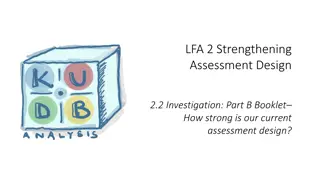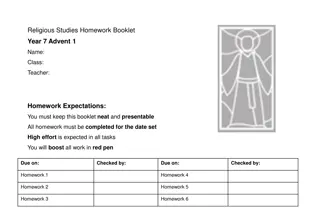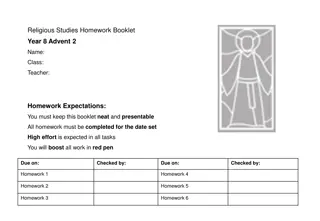
Independent and Dependent Variables in Psychological Research
Learn about the essential concepts of independent and dependent variables in psychological research, including their definitions, roles, and operationalization. Gain insights into how these variables are identified and applied in research studies to draw valid conclusions.
Download Presentation

Please find below an Image/Link to download the presentation.
The content on the website is provided AS IS for your information and personal use only. It may not be sold, licensed, or shared on other websites without obtaining consent from the author. If you encounter any issues during the download, it is possible that the publisher has removed the file from their server.
You are allowed to download the files provided on this website for personal or commercial use, subject to the condition that they are used lawfully. All files are the property of their respective owners.
The content on the website is provided AS IS for your information and personal use only. It may not be sold, licensed, or shared on other websites without obtaining consent from the author.
E N D
Presentation Transcript
Topic 11: Research methods How do you carry out psychological research? Revision work book. NAME: ___________________
The Big Picture. You should have learnt about Notes complete RAG Action or X Designing psychological research to set up the variables under investigation Identifying and controlling unwanted variables The different types of hypothesis for investigations and how to write them The different sampling methods The different types of research and experimental designs Issues of reliability and validity when analysing research procedures Ethical issues and how to deal with them The different research methods used by psychologists Data analysis including arithmetic and numerical computation The use of descriptive statistics The use of graphs to illustrate data The difference between primary and secondary data The difference between qualitative and quantitative data Ethical issues associated with psychological research Red Insecure or incomplete I could not answer an exam question on this subject Amber Emerging I could have a go at an exam question on this subject but would probably miss some details and therefore lose some marks. Green Secure/confident I could answer an exam question on this subject and achieve full Marks
Independent and dependent variables An independent variable (IV) is the variable (factor) in research that is directly manipulated by the researcher in order to examine its effect. The IV can have two or more levels, which are seen in the conditions (parts) of an investigation. For example, if you are examining the influence of caffeine on performance, the IV is caffeine and the researcher may alter the levels given to participants. In one condition of the investigation, participants may be given 1 mg of caffeine and in the second, 2 mg of caffeine. To identify the IV of an investigation, you need to look at the factor being altered between the conditions of the study. Apply it Identify the independent and dependent variables in the following investigations: A study to investigate whether cats or dogs sleep longer IV DV A dependent variable (DV) is the variable that is being measured by the researcher. The DV should be affected by the manipulation of the IV, so it is the outcome of the study. To identify the DV, you should look for the variable that is being measured in the investigation. For example, if the IV is the level of caffeine, the DV could be a person s work performance. Performance should change as a result of different levels of caffeine. A study to see if age effects the amount of sleep we need IV DV It is important that both the IV and DV are operationalised, so that they are testable and measureable. When we operationalise variables, we make them specific and detailed so that another researcher can know what was measured and changed, and how. An investigation into how the type of praise you receive influences grades achieved in exams. REMEMBER when identifying and stating the IV of an investigation you MUST give all variations e.g. IV Caffeine 1mg or 2mg IV DV -
Extraneous variables are factors in an investigation that may interfere with the IV or DV and affect the findings of the study. Extraneous variables may be associated with the situational conditions of the study or the participants involved in the study, and they need to be controlled to prevent them from affecting the outcome of a study. If an extraneous variable is not controlled, and so has an effect on the outcome, it is known as a confounding variable. This is because it confounds (damages) the results. Researchers can either eliminate or control extraneous variables. Eliminating extraneous variables involves removing the likelihood of them occurring, such as placing a silence sign outside the experimental room to prevent distractions. Many extraneous variables cannot be eliminated, but they can be controlled. Extraneous variables Situational variables are present in the environment of the investigation, and typically include noise, distractions, light levels and temperature. These variables can influence the outcome of a study if they vary between conditions. For example, if one group of participants is trying to perform a written task in poor light, their ability may be worse than a group who performs the same written task with good lighting conditions. How the study was conducted (the procedure) can introduce situational variables. If a study requires participants to repeat a test, this can cause problems. For example, participants may improve just because they have repeated the test, or they may become tired or bored, and so do less well. This is known as order effects. Participants may also change their behaviour to meet the perceived aims of the study, which are known as demand characteristics. Investigator effects can also encourage demand characteristics. This is when a researcher unintentionally gives participants clues about how to behave, for example they may nod when a participant gives a correct answer. One way to control situational variables across the conditions of an investigation is to use a standardised procedure. This involves keeping the situation and procedure exactly the same across all conditions of an investigation. So if the noise is at a certain level for one condition, it should be exactly the same for the other conditions of the study. To prevent order effects from occurring, researchers can use a technique called counterbalancing. Counterbalancing involves half of the participants experiencing the first condition and then the second condition; the remaining half experience the second condition before the first condition of the study. In this way, the order effects of either improvement or decline in performance are equally distributed in both conditions to cancel each other out. Order effects can also be controlled by randomisation. This is based on the same principle as counterbalancing, but each participant is assigned to the first or second condition as a matter of chance. For example, they could pick the first or second condition from a hat, or a computer could randomly generate the condition order. A single-blind technique can control demand characteristics (when participants change their behaviour). This means that participants are blind to the aims or expectations of the study and certain information about the procedure is withheld. This technique is often used in clinical psychology, where clinical trials involve giving medication. In a single-blind clinical trial, a participant will not know whether they are given the actual medication or an inactive substance (placebo). The double-blind technique can be used to control demand characteristics encouraged by investigator effects. This technique means that neither the participants nor the researchers involved in data collection, or interaction with participants, know the aims of the study. Often an independent researcher is employed to conduct the research. Situational variables
Participant variables are associated with the participants involved in an investigation. Participants bring with them various abilities, attributes and tendencies that can influence the outcome of the results, particularly if a certain type of participant is found in one condition of the study and not the other. One way to control participant variables is to use the same participants in both conditions of the study, so the data for each participant can be compared across both conditions. Another way of controlling participant variables is to use different participants but make sure they are matched on important characteristics. Participant variables Participant variables can include personality type, physical ability, substance tolerance, memory ability, life experiences, mood, upbringing and many others. The researcher only needs to consider what participant variables are likely to influence the findings of their study. For example, driving ability is unlikely to influence the outcome of a short- term memory experiment. Random allocation of participants can also be used to control participant variables. This involves participants being randomly assigned to one condition or the other, which should result in a random distribution of participant variables across the conditions of the study. Although it is not foolproof, it is designed to prevent only a certain type of person being in one condition of the study. Apply it Identify the potential situational and participant variables that may influence the findings of the following investigation. Researchers posted a notice on a social media site to recruit volunteer participants for an investigation. The investigation wanted to see whether or not people select partners who are similar to themselves. Once they were recruited, they were invited to a university laboratory and asked to select their ideal partner from a series of photographs and descriptions. The researchers wanted to see if males or females were more likely to select people who were similar to themselves as ideal partners. The participants came to the laboratory on different days and were tested by a variety of male and female researchers.
Hypotheses Every research study has a null hypothesis and an alternative (experimental) hypothesis. Hypotheses are different from the aims of a study, which show the area of interest for an investigation. Instead, hypotheses are statements of predicted outcomes based on the theory being tested. The way in which a hypothesis is written depends on whether the investigation is looking for a difference in conditions (as a result of the IV) or a relationship between variables (in a correlation).
Null hypothesis A null hypothesis is a prediction that the result or outcome will find no effect or very little effect. To write a null hypothesis, you need to imagine what would happen if you found very little effect of your IV on your DV When you are looking for a difference: There will be no difference in (enter the DV) whether participants (enter the IV BOTH conditions). Any difference will be due to chance. When you are looking for a relationship (correlation): There will be no relationship between (enter the IV) and (enter the DV); any relationship found will be due to chance
Alternative (experimental) hypotheses Alternative (experimental) hypotheses An alternative hypothesis is a prediction of the expected outcome of a study. This is usually based on a theory. If a theory makes a clear claim, then we can use a directional hypothesis (because the expected direction that the results will go can be predicted). For example, when looking for a difference: Adults will recall more digits than children. When looking for a relationship (correlation): There will be a negative correlation between self-esteem and depression OR the more depressed people feel, the lower their self-esteem. If a theory cannot make a clear prediction, or if the evidence is mixed, then we use a non-directional hypothesis. A non-directional hypothesis states that a difference or relationship will be found, but does not state what that difference or relationship will be. For example, when looking for a difference: There will be a difference in the number of digits recalled by adults and children. When looking for a relationship (correlation): There will be a negative correlation between self-esteem and depression. An experimental hypothesis is used when a laboratory or field experiment is being carried out.
Apply it Write a null hypothesis for each of the investigations listed below. For each you should write a null hypothesis looking for a difference AND a null hypothesis looking for a relationship: Participants over the age of 60 years will take significantly longer to learn a list of people s names compared to participants under the age of 25 years Participants who drink 6 cups of caffeinated coffee will stay awake significantly longer than participants who drink 6 cups of decaffeinated coffee, between the hours of 6am and 8pm People who smoke will be significantly more likely to develop cancer compared to people who do not smoke Significantly more money is spent in UK department stores the week before 25th December than in the week after Christmas Day. Five year olds from primary schools in Wiltshire will be less likely to share a new toy than their older sibling. Students will recall significantly more detail from a psychology lesson given on a Monday morning than one given on a Friday afternoon, as measured by a class test.
Sampling methods (techniques) Methods of sampling To achieve a random sample, the target population should be identified and all have an equal chance of being selected. This is known as a random sampling technique. This involves assigning every member of the target population with a number, and then drawing numbers from a hat (like a lottery). Random A target population is the group of people that an investigation is concerned with or wishes to study and apply the findings to. If a study is looking at the impact of literacy programmes on preschool children, for example, the target population will be all preschool children. It is unlikely that the researchers will be able to study all preschool children, so a sample of the target population will be used. A sample should represent the nature of the target population. Being representative ensures that the findings of a study can be generalised to the target population concerned. If a target population is made up of different types of people and a researcher wishes to replicate this in their study, then a stratified sampling technique can be used to achieve this. This technique identifies the subgroups within the target population and takes a random sample from each to ensure they are proportionately represented in the sample. For example, if a target population of office workers has 10 per cent of workers in senior management and 90 per cent in general office staff, then the sample should consist of equivalent proportions of these office workers, drawn at random. Stratified A volunteer sampling technique involves gathering a sample of participants who are willing to volunteer themselves to take part in a study. This often involves advertising the study in some way, such as placing an advert in a newspaper or on a noticeboard, requesting volunteers to get in touch if they would like to participate. Volunteer An opportunity sampling technique makes use of people who happen to be around at the time of the research. This can be done by asking people to agree to take part, or simply studying people who happen to be there without their agreement (as in covert research). Opportunity
Strengths Weaknesses Random Stratified Volunteer Opportunity
Research and experimental designs There are three designs: Independent measures design this involves splitting participants into groups and testing each group in only one condition of the study. This is also known as an independent groups design. Sometimes this is the only design possible, if gender or age is the IV for example, as a participant cannot be in both conditions. Repeated measures design this involves using the same participants in all conditions of a study. Matched pairs design this uses different people in each condition of the study, but matching them for likeness on important characteristics. The characteristics chosen for matching depend on the aims of the study. If you were conducting a study on whether different amounts of time spent revising affected test results, it would be important to match the participants on ability as well as ensuring everyone had the same notes to use for revision. Strengths There are no order effects as participants only take part in one condition of the study. Weaknesses More participants are needed than for a repeated measures design. There may be individual differences between the groups. Controlling problems Participants can be randomly allocated to each condition. Independent measures design Repeated measures design Fewer participants are needed, making it more economical. There are no individual differences between conditions of the study. Demand characteristics are more likely as participants are more able to guess the aim. Order effects mean that results may reflect practice or fatigue. Order effects need to be controlled using counterbalancing or randomisation. Matched pairs design Fair comparisons can be made between the groups as they are equally matched. It is time-consuming to match participants and not all characteristics can be equally matched.
Explanation Issue In sampling methods In experimental designs Reliability refers to the consistency of an outcome or result of an investigation, which means that the same result is found again and again. This is an important feature of science because we can trust the findings and know that they are not a one-off result. How we plan and conduct research can affect the reliability of the outcome. If a standardised procedure is not used, there can be variability in the procedure, which can result in If a sampling method or technique leads to a biased sample, then the outcome of the research may not be relied upon to occur again, as it could differ if the study was replicated. In an independent measures design, participants differ between conditions, so there is variability between groups because of participant variables. This can lead to unreliable findings. Reliability Validity refers to the extent to which a study measures what it intends to measure. If a study is designed to measure aggression in preschool children, then it is important that the measures of aggression actually test that characteristic (this is known as internal validity). The sample of preschool children must also correctly represent the intended target population (this is known as external validity). The way in which we design a study can affect the validity of the results. If a sample error occurs then the findings of the research are untrue of the target population. This affects the (external) validity of the results The way in which participants are allocated to the conditions of a study, known as the experimental or research design, can affect the validity of the findings. For example, if a repeated measures design is used and order effects are shown, this can mean that the outcome may be a result of practice or fatigue and not the intended variable being investigated. If we wanted to investigate whether male or female faces are easier to recognise, for example, it could be that participants become tired of recognising male faces in the second condition after having to recognise female faces in the first condition. This would result in a finding that suggests we find male faces difficult to recognise, but actually the result is due to order effects. Similarly, demand characteristics are more likely in a repeated measures design, which can also invalidate the results. Validity
Reliability and validity of qualitative and quantitative methods Qualitative methods are research methods where the emphasis of the research is on gathering lots of detailed information from which ideas and theories emerge. Qualitative methods can include case studies, unstructured interviews and participant observation. These methods tend not to follow the normal scientific route of enquiry because they are not testing hypotheses in a traditional way. Instead, they are more exploratory. Quantitative methods tend to follow the normal scientific route of enquiry, starting with a hypothesis to test a theory. A study is designed and conducted to test the hypothesis and results are generated to support or not support the theory. These methods are typical of experiments and some types of questionnaires and observations. Quantitative methods are designed to gather facts and measure behaviour that can be applied to the target population, which means that they produce data that is generalisable to others (external validity). Quantitative methods allow a researcher to remain detached from their participant, so the method is seen as more objective and less open to researcher bias. Because qualitative methods are more exploratory and designed to understand behaviour from the perspective of participants, they are not easy to replicate. This means that they may not produce reliable findings. The information gathered using qualitative methods is likely to be restricted to those individuals being studied, which limits the generalisability of the findings (external validity). In qualitative studies, the researcher can become very involved in the investigation and close to their participants, which can result in researcher bias and investigator effects. This may lower the validity of the findings. However, qualitative researchers are mindful of these issues and use techniques such as triangulation to ensure they do not lose their professional objectivity. Qualitative methods: ways of conducting research that find out new information rather than testing a prediction; often resulting in gathering qualitative data. Researcher bias: when a researcher interprets the outcome of a study according to their own view (subjective). Triangulation: when more than one measure is taken for a behaviour to cross-validate the findings. Objective: not open to interpretation, unbiased. Quantitative methods: ways of conducting research that test a prediction and gather quantitative data.
The ethics of psychological research Informed consent Right to withdraw Deception This can be dealt with by This can be dealt with by This can be dealt with by Debrief Confidentiality Protection of participants This can be dealt with by This can be dealt with by This can be dealt with by
Understanding research methods: Experiments Laboratory experiment A laboratory experiment is an investigation that takes place in a controlled environment. It is therefore untypical of a place where the behaviour being studied would naturally occur. It is an environment where researchers stage the conditions of the study and invite participants along. Field experiment A field experiment is an experiment conducted in a natural environment, but there is still an IV that is manipulated by the researcher and a DV that is measured. There is control over extraneous variables, but the level of control is not as high as in a laboratory because naturalistic environments are more unpredictable. Participants may or may not be aware of taking part in the research. Natural experiment A natural experiment also occurs in a real-life environment and has an IV and DV, but the researchers themselves do not manipulate the IV as it occurs naturally. Naturalistic experiments are generally opportunist, which means that they make use of unique and naturally occurring situations that would otherwise be difficult, or even unethical to set up. A laboratory experiment has an IV and a DV, and the aim is to discover cause and effect between these variables by controlling or eliminating other extraneous variables. Field experiments are useful when studying behaviour that needs to be seen and tested in a natural environment, such as conformity and obedience, which are studied by social psychologists. Laboratory experiments are useful for studying many types of behaviour, but are more useful for studying behaviour that might not be affected by the artificial environment of a laboratory, such as memory or reaction tests. They are useful in studies that need to isolate the IV and DV and exercise control.
Apply it Identify what type of experiment is being described in the following examples: Researchers wanted to see whether using animals in a local residential care home for the elderly improved the residents' feelings of well-being. Researchers set up an experiment at a local train station to see if people were able to identify the perpetrator of a staged crime. Researchers conducted a memory experiment in a controlled setting to see if people recalled more words from a list that was either organized or randomly arranged.
Interviews Is a standardised list of pre-set questions that a respondent is asked. A strict interview schedule is followed so that respondents are asked exactly the same questions in the same way and order. These questions are prepared beforehand and the researcher will not deviate from the interview schedule. Structured interviews are more suitable for large-scale studies where a number of interviewers are required to get information from lots of respondents. Structured interview An interview is a non-experimental method as it does not manipulate an IV directly. Instead, an interview is a research method designed to gain information directly from participants about their beliefs, opinions and attitudes. It involves asking participants (or respondents) questions and then analysing their answers. Interviews can be done face to face, or over the phone, and can be more or less structured depending on what type of information the researchers aim to gather and for what purpose. For example, a clinical interview is one conducted by a clinician with a patient. As each patient will present different symptoms and issues, the clinician needs to be fairly flexible with the questions that they ask, so a less structured interview is better in this case. Has pre-set questions that are prepared beforehand and a framework to follow, but also some open-ended questions or points of discussion that the researcher can follow up with the respondent. This allows some free-flowing conversation to occur, allowing the interviewer to explore the respondent s thoughts and beliefs when opportunities arise throughout the interview. Semi- structured interview Does not have prepared questions or a schedule to follow. Although an interviewer may have a broad aim to follow, they generally have a conversation with respondents that can go in all sorts of directions. Typically, the interviewer directs questions based on the respondent s answers, like a clinical interview described above. This type of interview is most suitable when in-depth information needs to be gathered from a small group of respondents. Unstructured interview Exam style question A researcher wanted to investigate the impact of a new postnatal care programme on a small, local maternity ward. The researchers were interested in what women felt about the postnatal experience and if they thought it could be improved. Explain what type of interview would be most suitable for this type of investigation. (3 marks)
Strengths Weaknesses Interviews Structured interviews Semi-structured interviews Unstructured interviews
Questionnaires Questionnaires Strengths Weaknesses A questionnaire is a self-report technique that investigates people s beliefs, options and attitudes first hand. Questionnaires are more flexible than interviews as an interviewer is not needed to administer the questionnaire; it can be posted by mail or online. A questionnaire is suitable when a large number of people need to be surveyed at one time and can be designed to ask many different types of question. Closed-ended questions are designed with a pre-set list of answers that a respondent can choose from. Simple closed-ended questions offer a yes/no response. Other types of closed-ended questions can be designed to offer other options. Open-ended questions do not have pre-set responses, but allow the respondent to answer freely, using prose. For example: How do you feel about animal research?
Questionnaires Set of questions that are written down and given to participants to answer. 4 types of questions: Closed questions Have a fixed number of possible answers, and participants often just tick a box. E.g. Are you afraid of spiders Yes/No Open questions More detailed answers, participants are asked for a description. E.g. How do you feel when you see a spider? Rank-style questions Asks the participant to say how much more or less things are. E.g. Give each animal a number from 1 (most scary) to 4 (least scary): Cat, Fish, Spider, Hamster. Likert style questions are a type of rank question that gives a statement and you have to say whether you agree/disagree.
Standardised instructions All questionnaires start with standardised instructions. These tell the participants what they need to do and are the same for each person. They should contain: An explanation of what the questionnaire is about (topic being investigated) Ethical issues: Right to withdraw NEVER state they must answer every question! Privacy and confidentiality: NEVER ask for their name and tell them what will happen with their results. Tell them they can leave any question they feel uncomfortable about. Instructions on how to complete the questionnaire
Example of standardised instructions Thank you for volunteering/agreeing to take part in this study. You will be given a questionnaire about phobias to complete. The aim of the study is to investigate phobias. You will be required to complete different questions (open, closed, rank-scale). You do not have to complete the questionnaire and can leave at any point without penalty/consequence. You will be asked about phobias of animals (dogs/cats/spider etc.). Because phobias are distressing for some people you should be aware that they will be questions that will ask about them. Please sign here to give your fully informed consent to take part. You can request a copy of the results if you wish. Your name/details will not be disclosed. Your questionnaire will be destroyed after 6 months.
Correlation Correlation Correlation Strengths Weaknesses A correlation is a technique designed to look for relationships between variables. Data can be gathered using a range of research methods, such as an observation or questionnaire, but the researcher analyses the data using a correlation. Researchers are looking for a relationship between co-variables. The way that these co-variables change when examined together tell us about the nature of the relationship between them. This can be seen when the co- variables are plotted on each axis of a scatter diagram. A positive correlation or relationship is found when a co-variable increases as the other co-variable increases. For example, we would expect the co- variable time spent revising and the co-variable percentage grade achieved on a test to show a positive correlation. This would mean that those who spend less time revising achieve a lower test score and those who spend a lot of time revising achieve a higher test score. A negative correlation or relationship is found when one co-variable increases as the other co- variable decreases. For example, we would expect that as the co-variable time spent on social media increases, the covariable percentage grade achieved on a test would decrease. This would mean that the more time people spend on social media, the lower the test score, and the less time spent on social media the higher the test score.
Case study Case study Case study Strengths Weaknesses A case study is an in-depth investigation into one person or a group of people. It typically involves the use of a range of research methods, such as interviews, experiments and observations. They are generally suitable for the study of unique or rare individuals, such as brain-damaged patients, or people with unique circumstances that a psychologist could not have staged for ethical or practical reasons.
Observation: An observation is a research method designed to simply observe and watch what people do in certain situations or environments. There are several different types of observation that are chosen according to the topic of investigation. A naturalistic observation is conducted in an everyday environment where the behaviour being studied would normally be seen. People in a naturalistic observation would be expected to behave normally and spontaneously, and a researcher will record what they see. Naturalistic observations are suitable when studying everyday behaviour. Overt observations are conducted with the participant s knowledge that they are being observed and form part of an investigation. When an observer becomes involved in the group that they are observing, it is known as a participant observation. When the observer simply stands back, watches and records without being actively involved, it is known as a non- participant observation. A controlled or structured observation tends to be conducted in a laboratory or controlled environment, where a researcher may stage a situation or set up the environment to encourage the behaviour they are trying to investigate. This type of observation is suitable when it may not be practical for an observer to wait for a behaviour to occur naturally. Covert observations are conducted without the participants being aware that they are being watched. Structured observations tend to be overt because participants are invited to the controlled environment, and naturalistic observations can be either covert or overt. Strengths Weaknesses
Significant Figures Decimals Fractions Standard form Decimal form refers to any number in the base-ten system Numbers are thought of as over 10 or in items of tenths So the fraction written as a number over 10 would be 5 over ten or 5/10 5/10 = 0.05 Fractions can also be used to show proportions. If you have a total (or whole) number of something, then you can work out fractions to show differences within the whole. In a survey about happiness, for example, 60 participants claimed to be happy. These participants fell into four age bands. Usually, you reduce the fraction by dividing the top and the bottom numbers as far as you can. In this case, however, sticking to twelfths allows you to compare across the age bands. Note that if your calculations are correct, the fractions should add up to a whole number: Standard form is a way of writing down large or small numbers without including all the digits for example 10 x 10 x 10 x10 x 10 x 10 10 to the power of 6 = 106 3200 written in standard form would be 3.2 x 103 e.g. round 3268 to 1 sf the first significant figure is a 3, which represents 300, so we need to round to the nearest thousand. The number next to the 3 is a 2 which isn t 5 or more so we round down to 3000. Rounding numbers You are likely to be asked to round to 2 decimal places (2dp) to do this look at the second number after the decimal place. Underline it and circle the number next to it, if that number is 5 or more you would round up. If not you would keep it the same. E.g. 4.5678 would round to 4.57 because the 7 which is next to the 6 is 5 or more . Ratio Ratios are used to compare quantities. A ratio shows how much one thing compares to another. For example the ratio of 2 : 3 means for every 2 the first person gets the second person would get 3 parts.
Percentages Set A Strengths of this measure Weaknesses of this measure Measure 2, 2, 3, 5, 5, 7, 8 A percentage is a fraction of 100 To work out a percentage just work out the fraction and multiply by 100 Example: if 200 people were surveyed to find out how many thought practice, genetic make-up or good schooling were the reasons for something having a good memory A fourth option do not know was added To find the percentage for each option divide the answer number by 200 and multiply by 100. The Mean = average Adding the numbers up gives: 2 + 2 + 3 + 5 + 5 + 7 + 8 = 32 Makes use of all scores. This as good as it increased validity as all scores are included Takes into account extreme values Why is this bad? To find the mean, you need to add up all the data, and then divide this total by the number of values in the data. There are 7 values, so you divide the total by 7: 32 7 = 4.57... So the mean is 4.57 The Median = middle To find the median, you need to put the values in order, then find the middle value. If there are two values in the middle then you find the mean of these two values. The numbers in order: 2 , 2 , 3 , (5) , 5 , 7 , 8 Easy to calculate with a small data set Hard to calculate with a large data set. Is easily affected by anomalies Inferential statistics The middle value is marked in brackets, and it is 5. So the median is 5 Descriptive stats are used to summarise raw data. The whole set of scores from a study. Before any analysis takes place. The mean, median and mode are types of average. The range gives a measure of the spread of a set of data. The table to the side shows how to calculate the mean, median, mode and range for a set of data. The Mode = most frequent The mode is the value which appears the most often in the data. It is possible to have more than one mode if there is more than one value which appears the most. The data values: 2 , 2 , 3 , 5 , 5 , 7 , 8 Easy with a small data set Doesn t take into account all values The values which appear most often are 2 and 5. They both appear more time than any of the other data values. So the modes are 2 and 5 The Range To find the range, you first need to find the lowest and highest values in the data. The range is found by subtracting the lowest value from the highest value. The data values: 2 , 2 , 3 , 5 , 5 , 7 , 8 Easy to calculate and quick. Impacted by extreme scores The lowest value is 2 and the highest value is 8. Subtracting the lowest from the highest gives: So the range is 6 Shows us the variance in the scores. 8 - 2 = 6
Normal distribution Outliers Skewed distribution Outliers can cause skewed distributions (the mean is very susceptible to outliers) A positive skewed distribution is caused by a high extreme set of scores, therefore a positive skew will contain more low scores than high scores. (The skew is caused by outlying positive scores) A negative distribution is caused by a low extreme of scores, and therefore will contain more high scores than low scores (the skew is caused by outlying low scores) If the mean, median and mode are not similar then a skewed distribution is produced. This is found when the mean, median and mode are very similar or the same. The further the scores are from the mean the less often they occur in a set of data. The graph will be symmetrical like below. If the mean, median and mode are not similar then a skewed distribution is produced. A normal distribution is found if the mean, median and mode for a set of data are very similar or exactly the same. When data are normally distributed 50% of the values are below the mean and 50% are above. The majority of the scores are equally spread close to the mean on either side of it. The further the scores are from the mean, the less often they occur in a set of data. Many mathematical statistical tests can only be carried out if data are normally distributed. Histogram Histograms in psychology refer to bar charts that show continuous data and thus don t have gaps in between the bars. Bar charts Scatter diagrams Uses bars to describe categorical data As the data are discrete (not continuous) there are gaps between the bars Only used for correlations Shows a relationship between two variables We add a line of best fit by drawing a line that has half the scores above it and half below. Frequency Don t forget frequency refers to the total .
Apply it Apply it Koko carried out a survey to find out what proportion of people said they became anxious when taking an exam. He asked 80 people: 35 said they strongly agreed to feeling anxious, 14 said they agreed, 12 said they disagreed and 19 said they strongly disagreed. Calculate the proportions for Koko, using a) fractions, b) decimal form and c) percentages. Show your workings, using 2 decimal places
Primary and secondary data Primary data is data the researcher has gathered for a specific piece of research. Stanley Milgram (1963) gathered primary data when he recorded voltages in his electric shock experiments . Primary data is gathered for a specific aim, to suit the purpose it is required for. However, this can be expensive, which is a disadvantage. Secondary data is data a researcher uses that was gathered previously for a different purpose. In a meta-analysis, the data being analysed is secondary data because such research involves collating the results of different studies that ask similar questions and have already been carried out by other researchers. A problem with secondary data is that the original purpose of the data may not quite suit the study that is reusing the data. It can, however, be cheaper to existing data. For some studies, using secondary data can mean larger sample sizes, such as using a longitudinal study. Caspi et al. (2003), for example, used the Dunedin Multidisciplinary Health and Development Study to find information about genotypes so that they could look at why stress led to depression in some people and not others.
Qualitative and quantitative data Qualitative data are data in the form of words, pictures or some other format where a story is being told and where the data give detail. Qualitative data is descriptive and gives information that cannot be measured so effectively quantitatively, such as someone s feelings about their friends. Qualitative data can be gathered through focus groups, observations or case studies. Sigmund Freud s (1909) study of Little Hans and Michel Siffre s (1975) cave study both used qualitative data to explain a situation in detail. Quantitative data is data in the form of numbers, such as the percentage of people conforming when someone wrongly identifies what line matches another line (Asch, 1951). Studies in psychology often use quantitative data because measurements can be subjected to descriptive statistics and testing. Methods can include experiments or questionnaires. Studies using quantitative data often use large samples and look for patterns in behaviour. Lloyd Peterson and Margaret Peterson (1959) collected quantitative data in their study to test the duration of short-term memory.
Issues and debates Earlier in this topic you looked at five ethical issues: informed consent, deception, confidentiality, the right to withdraw and the protection of participants. Morality is also an ethical issue. Ethical issues are issues that cover working and living with other people. Ethical principles come from a society s moral stance. They are about what is considered right or wrong. Researchers in psychology must adhere to ethical principles and do what is right. The British Psychological Society (BPS) sets out clear ethical principles both for researchers and for practitioners. Ethical issues in psychological research Although Topics 6 10 are also relevant, this section focuses on Topics 1 5 to explain ethical issues in psychological research. These are not the only ethical issues in psychological research, but they will help you with your discussions.
Development Memory Psychological Problems The brain and neuropsychology Social Influence Children involved so must get consent from parents Need consent from people who have had brain damage Zimbardo participants didn t consent to what happened Consent As there is deceit, debrief is necessary (Peterson and Peterson) Debrief HM his name was not given Confidentiality Memory research involves deceit but debriefing makes it acceptable Deception Withdrawal Children involved in Development research Children have the right to be protected (UNCRC) Don t impost psychological harm Nature of the topic makes it sensitive Young s research may be upsetting Caspi s about genes may be upsetting Vulnerable patients when highlighting brain damage Stress can be imposed Protection from brutality - Milgram Protection from Harm
Independent variable (IV) Dependent variable (DV) Operationalisation Extraneous variable Confounding variable Situational variable Order effects Demand characteristics Investigator effect Participant variables
Standardised procedure Counterbalancing Randomisation Single-blind technique Double-blind technique Random allocation Null hypothesis Alternative (experimental) hypothesis Directional hypothesis Non-directional hypothesis
Experimental hypothesis Target population Sample Generalisability Sampling method Random sampling technique Stratified sampling technique Sample error Volunteer sampling technique Biased sample
Opportunity sampling technique Research design Experimental design Independent measures design Repeated measures design Matched pairs design Reliability Validity Internal validity External validity
Qualitative methods Researcher bias Triangulation Objective Quantitative methods Ethical issues Right to withdraw Informed consent Deception Debrief
Confidentiality Protection of participants Laboratory experiment Field experiment Natural experiment Interview Structured interview Interview schedule Semi-structured interview Unstructured interview
Social desirability bias Interviewer effect Questionnaires Close-ended questions Open-ended questions Correlation Co-variables Positive correlation Negative correlation Case study
Observation Naturalistic observation Controlled or structured observation Overt observation Covert observation Participant observation Non-participant observation Inter-rater reliability Observer bias Data analysis
Standard form Decimal form Decimal places Rounding Significant figures Estimate Ratios Fractions Percentage Descriptive statistics Raw data
Range Measure of dispersion Mode Bi-modal Multi-modal Median Mean/arithmetic mean Normal distribution Skewed distribution Frequency scores Frequency table Tally
Frequency diagram/ histogram Bell curve Bar chart/ graph x- axis y- axis Scatter diagram Line of best fit Primary data Secondary data Meta-analysis Qualitative data Quantitative data
Participatory Participation rights Protection rights Risk-benefit Key terms that are RED or AMBER for me and I need to concentrate on memorising them accurately:
Practice exam questions Outline three features of a laboratory experiment. (3 marks) Matt is carrying out psychological research into memory. He goes to the canteen in his school and asks the first 20 people he meets to be participants in his study. What is the sampling method used in Matt s study? (1 mark) What would be a fairer sampling method that Matt might have used? (1 mark) Matt decides to test the memory of males and females in his research. Which would be the most appropriate design for Matt to use? (1 mark)
Explain why this design is the most appropriate one for Matt to use. (2 marks) Matt gathers lots of quantitative data from his research into memory. What is meant by quantitative data? (1 mark) Explain one strength and one weakness of using quantitative data. You must refer to Matt in your answer. (4 marks) A researcher wanted to investigate how people felt about the rising use of social media amongst teenagers. Explain what type of interview would be most suited for this investigation. (3 marks)
The researcher then looks to try and find a relationship between age and use of social media. Identify the IV and DV in this investigation. (2 marks) A positive correlation is found between the two variables. Evaluate the use of correlations as they are used in psychological research. (5 marks) Eve wants to see whether students at her college in Chesterfield are more obedient to their teachers compared to her friends who go to school in Dronfield. Eve decides to use an interview to investigate levels of obedience between the two groups. Explain which type of interview Eve might use in her investigation. (2 marks)
Give an example of one open and one closed question Eve might use as part of her interview. (2 marks) Eve finds that the students in Chesterfield are more obedient than those in Dronfield. Using both situational and personality factors in obedience, explain why the students in Chesterfield might be more obedient to their teachers. (6 marks)






















